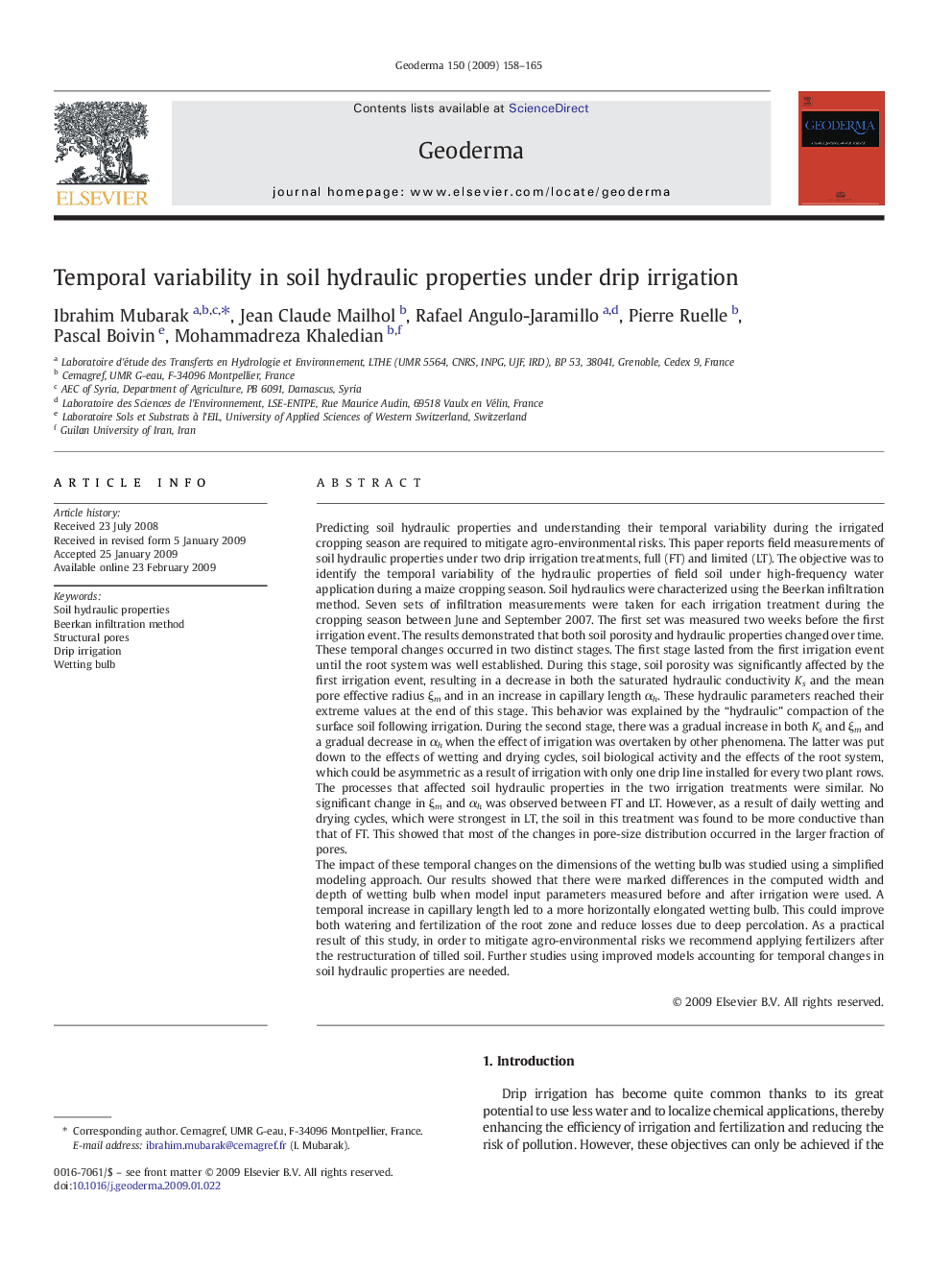| کد مقاله | کد نشریه | سال انتشار | مقاله انگلیسی | نسخه تمام متن |
|---|---|---|---|---|
| 4574760 | 1629534 | 2009 | 8 صفحه PDF | دانلود رایگان |

Predicting soil hydraulic properties and understanding their temporal variability during the irrigated cropping season are required to mitigate agro-environmental risks. This paper reports field measurements of soil hydraulic properties under two drip irrigation treatments, full (FT) and limited (LT). The objective was to identify the temporal variability of the hydraulic properties of field soil under high-frequency water application during a maize cropping season. Soil hydraulics were characterized using the Beerkan infiltration method. Seven sets of infiltration measurements were taken for each irrigation treatment during the cropping season between June and September 2007. The first set was measured two weeks before the first irrigation event. The results demonstrated that both soil porosity and hydraulic properties changed over time. These temporal changes occurred in two distinct stages. The first stage lasted from the first irrigation event until the root system was well established. During this stage, soil porosity was significantly affected by the first irrigation event, resulting in a decrease in both the saturated hydraulic conductivity Ks and the mean pore effective radius ξm and in an increase in capillary length αh. These hydraulic parameters reached their extreme values at the end of this stage. This behavior was explained by the “hydraulic” compaction of the surface soil following irrigation. During the second stage, there was a gradual increase in both Ks and ξm and a gradual decrease in αh when the effect of irrigation was overtaken by other phenomena. The latter was put down to the effects of wetting and drying cycles, soil biological activity and the effects of the root system, which could be asymmetric as a result of irrigation with only one drip line installed for every two plant rows.The processes that affected soil hydraulic properties in the two irrigation treatments were similar. No significant change in ξm and αh was observed between FT and LT. However, as a result of daily wetting and drying cycles, which were strongest in LT, the soil in this treatment was found to be more conductive than that of FT. This showed that most of the changes in pore-size distribution occurred in the larger fraction of pores.The impact of these temporal changes on the dimensions of the wetting bulb was studied using a simplified modeling approach. Our results showed that there were marked differences in the computed width and depth of wetting bulb when model input parameters measured before and after irrigation were used. A temporal increase in capillary length led to a more horizontally elongated wetting bulb. This could improve both watering and fertilization of the root zone and reduce losses due to deep percolation. As a practical result of this study, in order to mitigate agro-environmental risks we recommend applying fertilizers after the restructuration of tilled soil. Further studies using improved models accounting for temporal changes in soil hydraulic properties are needed.
Journal: Geoderma - Volume 150, Issues 1–2, 15 April 2009, Pages 158–165